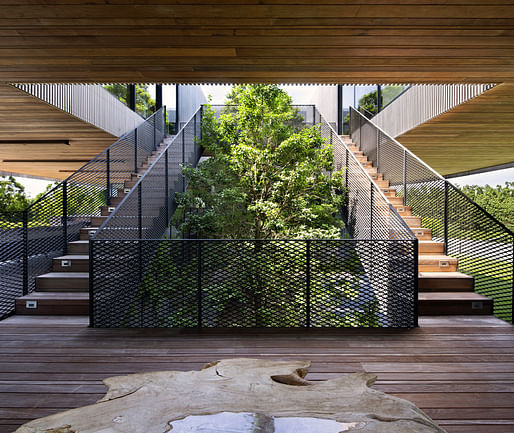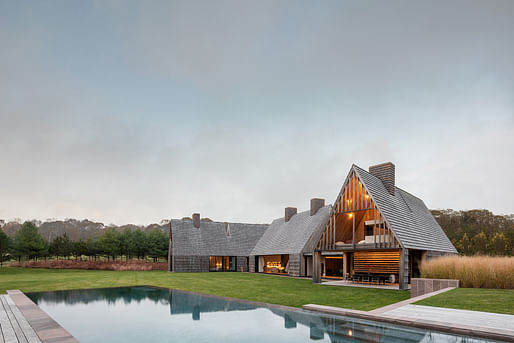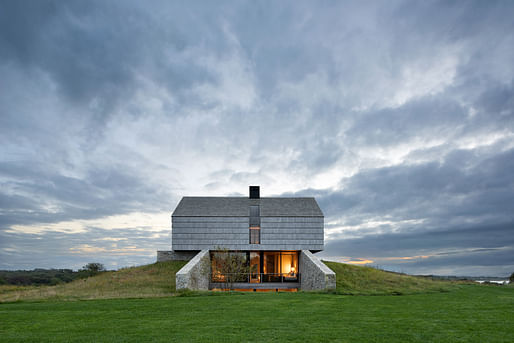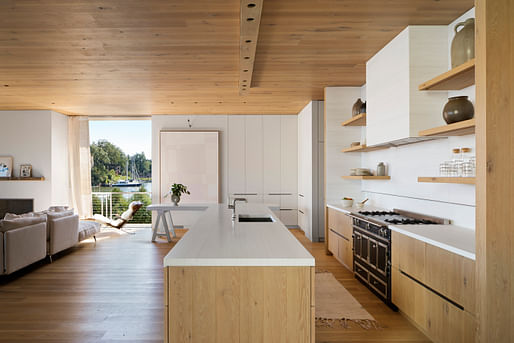
Following last week’s visit to Santa Monica-based KoningEizenberg, we are moving our Meet Your Next Employer series to New York this week to explore the work of Bates Masi + Architects.
From their studios across New York City and East Hampton, the five-decades-old firm operates along a principle that each project regardless of type or scale offers “the opportunity to enrich lives and enhance the environment.” The studio has built a varied portfolio of urban and suburban residences, schools, offices, hotels, restaurants, retail, and furniture, adding that “the attention to all elements of design has been a constant in the firm’s philosophy.”
Over on Archinect Jobs, the firm is currently hiring for an Architectural Designer to join their East Hampton office. For candidates interested in applying for a position, or anybody interested in learning about the firm’s output, we have rounded up four contemporary residential projects on the East Coast by Bates Masi + Architects that exemplify the studio’s ethos.

Located in a scenic yet vulnerable coastal lagoon area, Mecox seeks to confront the challenges posed by storm surges and wave action, while blending the home seamlessly with the landscape. Adhering to FEMA's elevation requirements and leveraging local zoning adjustments, the home is designed as a two-story structure that captures ocean views through elevated spaces. Inside, the main living areas are situated above ground level on slender supports to minimize the floodplain footprint and enhance creek views.

The design incorporates four large courtyards that allow natural light and sea breezes to penetrate the site, enhancing the connection between indoors and the surrounding landscape. The incorporation of metal panels and expanded metal mesh provides a robust external material palette, while a finely detailed continuous wood screen envelops the upper level, “lending it a lightness and buoyancy that belies its mass and height” according to the team.

Located on Long Island's East End, Stony Hill is designed for a young family and draws from its historical and agrarian surroundings. The design divides the landscape into distinct zones, mirroring the original pasture parcels, emphasized by a varied approach to plantings from high grasses to medium and low vegetation. The residence itself is a composition of smaller, interconnected volumes, each correlating with the landscape's zones, blending public, private, and service areas.

The design of the home seeks to modernize the traditional barn structure, with gabled roofs optimized for space and light, oversized shingle siding, and a modern take on thatch. Inside, natural elements such as oak, clay tiles, and plaster, draw further on the site's history while central fireplaces reinforce communal living.

Like Stony Hill, the home at Signal Hill sought to provide a home that blended modern living with its site’s agricultural history. Drawing inspiration from local traditional stone livestock enclosures, the renovated house features stone walls that define the first-floor space and support a discreet second story. Strategic openings in the walls seek to connect the inside and outside by enhancing natural light and framing scenic views, an ethos echoed by interior design elements such as freestanding cabinetry.

Sliding glass walls along the central axis link the home's east and west wings, capturing both sunrise and sunset. Atop the base, two shingled volumes emulate the site's original cottages, read as modest dwellings nestled on the hillside. “Unlike the traditional structures they recall, both volumes have vaulted ceilings belying their petite exteriors, deferring to their form, and befitting the house’s overall scale,” the team adds.


Located on Maryland’s Chesapeake Bay, the home at Acton Cove responds to the dual needs of protecting the site from the harsh maritime climate while creating a sense of privacy despite close proximity to neighbors. At the forefront of the site, existing bulkheads support a boardwalk linking multiple docks, from which weathering steel planters create a transition to the home’s elevated main level to safeguard against flooding. Deep overhangs shield the interior and provide shade, while the upper stories feature screens and adjustable canvas drapes to offer flexible privacy and weather protection.

The home’s material palette was arranged to reflect the harbor's heritage, including weathering steel, reclaimed pine siding, and nautical details like rope and sailcloth, coupled with modern insulation and glazing to support durability and energy efficiency. “In its thoughtful layering of envelope and site elements, the design connects the house and its owners with the best aspects of the environment, while providing shelter from the challenging elements,” the team adds.

Meet Your Next Employer is one of a number of ongoing weekly series showcasing the opportunities available on our industry-leading job board. Our Job Highlights series looks at intriguing and topical employment opportunities currently available on Archinect Jobs, while our weekly roundups curate job opportunities by location, career level, and job description.
No Comments
Block this user
Are you sure you want to block this user and hide all related comments throughout the site?
Archinect
This is your first comment on Archinect. Your comment will be visible once approved.